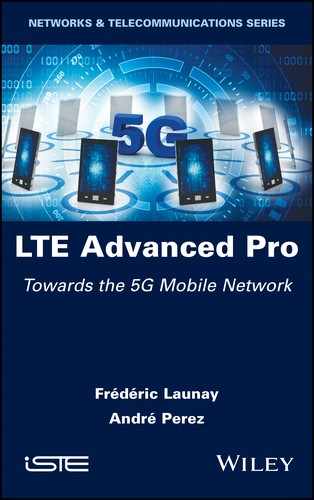Book Description
This book presents LTE evolution towards 5G mobile communication and the emergence of new requirements for MBB, MTC and LLC services.
As LTE technologies evolve, LTE Advanced Pro dramatically increases cell capacity and user data rates for the MBB unicast service. Such requirements are obtained using full-dimension MIMO, carrier aggregation (on either licensed or unlicensed frequency bands) and dual connectivity.
To improve the efficiency of same-content delivery to multiple users, 3GPP proposes a group communications service over LTE and defines mission critical push-to-talk (MCPTT) for dedicated public safety services.
Complementary low-cost and low-power modems with enhanced coverage and massive connectivity are emerging. Thus, this book also discusses the need for LTE to support low-rate transmission and high-latency communication for MTC services.
